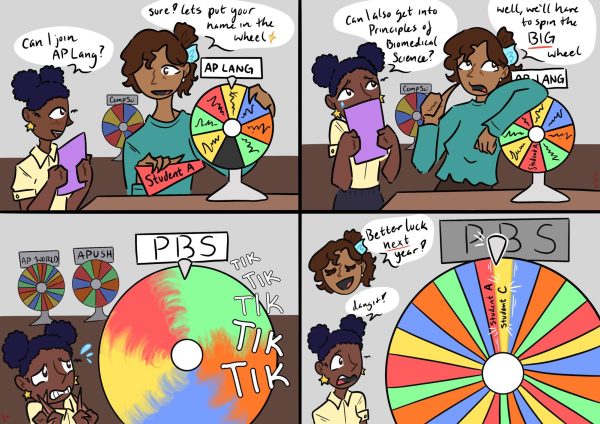R-rated movies have educational value
It’s not surprising that the subject of R-rated movies in an educational environment stirs up mixed reactions among concerned parents and their children.
Many people simply think that there is certain content contained within these movies that shouldn’t be exposed to students of the high school age group, and that the parent, not the teacher, should have exclusive control over what their child should be permitted to watch.
What these sentiments fail to recognize is the ever-changing and evolving growth of technology and the Internet.
Technology has advanced immensely within the past 20, even 10 years. As a result, an entire generation of children and teenagers have been entrusted with this greater amount of freedom, with the inherent implication that this will lead to an increased exposure to more mature topics.
In 1996, a high school student sued his school for barring his viewing of the R-rated Holocaust movie “Schindler’s List” because he felt that his constitutional rights were being violated. His local court disagreed, ultimately pointing toward the general disapproval of R-rated movies in the classroom at the time.
The classroom environment is changing as well. Teachers are constantly searching for new and engaging material to spice up their lessons and keep students engaged, and R-rated movies often become the means of achieving that. Films such as “Saving Private Ryan” and “Schindler’s List” can be used as a tool to give students a more riveting account of WWII than just reading words out of a textbook.
Teachers should be given more freedom to choose the movies that they believe will give students a better grasp of the topics they’re studying in class.
Parents can also look to the often inaccurate rating system employed in the U.S. by the Motion Picture Association of America. One commonly asked question is, “Sure the movie is R-Rated, but how R-rated is it?
In an article published by USA Today, the communications coordinator for the National Coalition Against Censorship said, “It’s impossible for a superintendent or anyone else to claim that all R-rated films are inappropriate for all the ages represented within a high school.”
Joy McClendon, director of elementary education and curriculum services for the Council Rock School District (CRSD) in southeastern Pennsylvania, seems to agree.
In an article published by eagleforum.org, he says, “The world kids are now being educated in is very different from the 1960s/70s…The educational value [of the movies] is worth more than the violence or brief nudity.”
Currently at Cal High, students are required to take a permission slip home to parents, with the idea that a signed permission slip means that the child has parental consent to watch such a film. While this policy gives teachers a considerable amount of freedom in choosing content for their lessons, it’s far from perfect.
The main problem doesn’t stem from the R-Rated movies themselves, rather the process that has to be carried out in order to watch it. Often, teachers will hand out permission slips at least a week in advance, turning the movie into an event and blurring the educational focus that was intended.
Students end up watching the movie mostly for the fact that it’s R-Rated, not for the originally intended educational purposes.
In addition, students that don’t get the permission slip signed and aren’t allowed to watch the movie are alienated from the rest, encouraged instead to work on some alternate activity outside of the classroom.
Although these problems are hard to avoid as every student and parent is unique, a clear emphasis on the controlled educational benefits of R-Rated movies would be a step in the right direction.


July Smith • Dec 21, 2019 at 2:27 pm
In todays world, I think if the teacher has been talking to the parents about the book, it is ok to shows the film with or without consent.